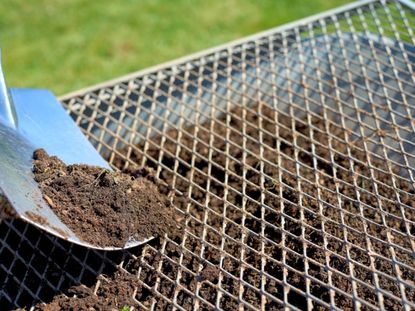Homemade Plant Food: Organic Plant Food Recipes To Make At Home


Plant fertilizer purchased from the local garden nursery often has chemicals that not only may harm your plants, but are not environmentally friendly. They don't sound particularly edible either. In addition, they can be a bit pricey. For this reason, many gardeners are making plant food themselves using organic plant food recipes. Learn more about how to make your own plant fertilizer at home.
How to Make Your Own Plant Fertilizer
Plants take nutrition from soil, water and air and garden plants tend to deplete nutrients in soil. This is why we must replace them each year with plant fertilizer. For many years, home gardeners and farmers used “free” manure to fertilize their crops. Manure can still be purchased to dig into the garden and/or compost at ¼- to ½-inch (0.5 to 1 cm.) layers. Compost can be made at home out of leftover food items and other detritus and is virtually cost free. Composting, or even compost tea, may be all one needs for a successful crop. If, however, the soil is still nutrient lacking or if you are planting a more demanding vegetable garden, augmenting with another type of fertilizer may be advisable. Manure tea is another great homemade food plant that you can easily create. While there are many of these tea recipes for making plant food from manure, most are quite simple and can be achieved with nothing more than the chosen manure, water and a bucket.
Organic Plant Food Recipes
With a few simple and relatively inexpensive ingredients, it's quite simple to make a batch of your own homemade plant food. The following are some examples, and as you will see, several of them can be made simply by ransacking your pantry.
Homemade Plant Food
Mix uniformly, in parts by volume:
- 4 parts seed meal*
- 1/4 part ordinary agricultural lime, best finely ground
- 1/4 part gypsum (or double the agricultural lime)
- 1/2 part dolomitic lime
Plus, for best results:
- 1 part bone meal, rock phosphate or high-phosphate guano
- 1/2 to 1 part kelp meal (or 1 part basalt dust)
*For a more sustainable and less expensive option, you can substitute chemical-free grass clippings for the seed meal. Use about a half-inch-thick (1 cm.) layer of fresh clippings (six to seven 5-gallon (18 L.) bucketfuls per 100 square feet (9 square m.) chopped into the top 2 inches (5 cm.) of your soil with a hoe.
Epsom Salts Plant Fertilizer
This plant food recipe is excellent for use on most any variety of plant, used every four to six weeks.
Gardening tips, videos, info and more delivered right to your inbox!
Sign up for the Gardening Know How newsletter today and receive a free download of our most popular eBook "How to Grow Delicious Tomatoes."
- 1 teaspoon (5 ml.) baking powder
- 1 teaspoon (5 ml.) Epsom salts
- 1 teaspoon (5 ml.) saltpeter
- ½ teaspoon (2.5 ml.) ammonia
Combine with 1 gallon (4 L.) of water and store in an airtight container. *1 tablespoon (14 ml.) of Epsom salts can also be combined with 1 gallon (4 L.) of water and put into a sprayer. Even simpler than the above recipe. Apply once a month.
Common Household Staples for Making Plant Food
As promised, there are quite a few items found commonly in your kitchen, or elsewhere around the house, that can be used as plant fertilizer.
- Green tea - A weak solution of green tea can be used to water plants every four weeks (one teabag to 2 gallons (8 L.) of water).
- Gelatin - Gelatin can be a great nitrogen source for your plants, although not all plants thrive with lots of nitrogen. Dissolve one package of gelatin in 1 cup (240 ml.) of hot water until dissolved, and then add 3 cups (720 ml.) of cold water for use once a month.
- Aquarium water - Water your plants with the aquarium water taken out while changing the tank. The fish waste makes a great plant fertilizer.
Try any of the above homemade plant food ideas for a “green” solution to healthy, bountiful plants and gardens. BEFORE USING ANY HOMEMADE MIX: It should be noted that anytime you use a home mix, you should always test it out on a small portion of the plant first to make sure that it will not harm the plant. Also, avoid using any bleach-based soaps or detergents on plants since this can be harmful. In addition, it is important that a home mixture never be applied to any plant on a hot or brightly sunny day, as this will quickly lead to burning of the plant and its ultimate demise.

Amy Grant has been gardening for 30 years and writing for 15. A professional chef and caterer, Amy's area of expertise is culinary gardening.